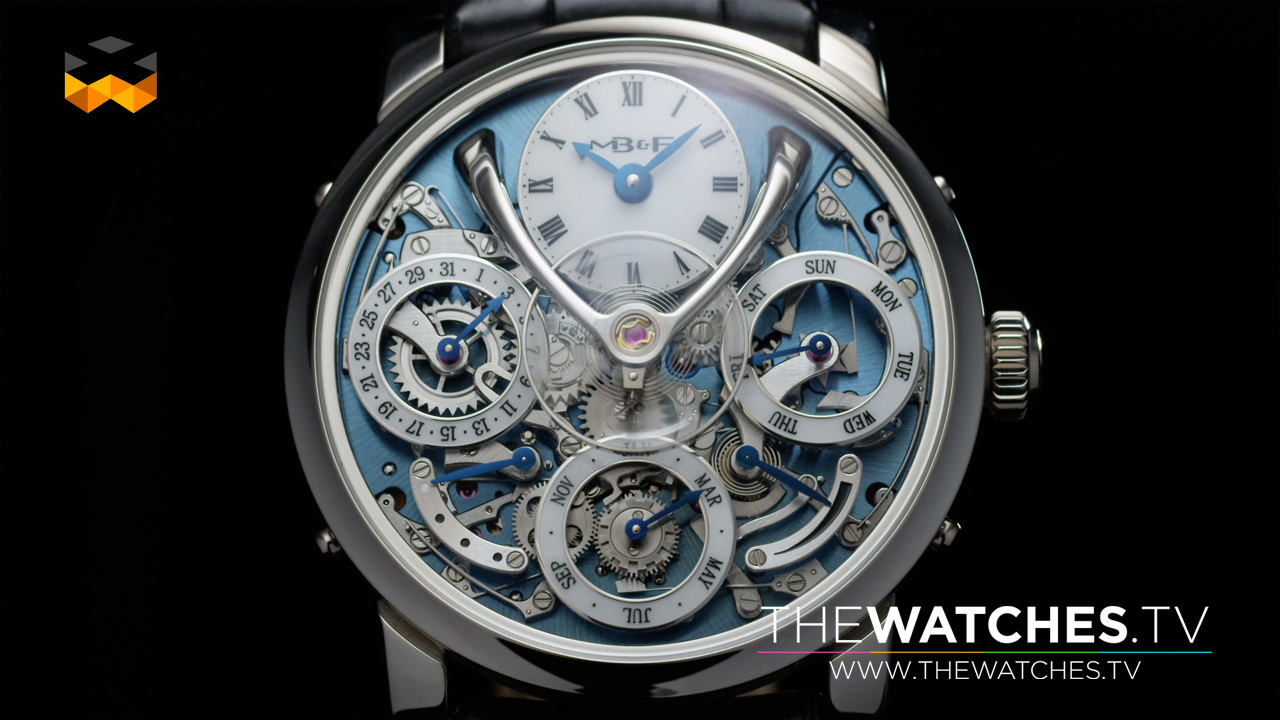Calendar Watches Saga 5 – Calendars We Love
In this last episode about calendar watches we wanted to take the time to focus on various ones that we find particularly interesting, beautiful, original or innovative.
Let’s start with the Perpetual Calendar with Equation of Time by Greubel Forsey. Why this one? Because it is in our eyes the most useful and legible perpetual calendar on the market today. This watch was conceived to be totally easy to read, easy to set and resistant to any bad manipulation. It integrates a mechanical computer able to program the determined cycle of the calendar. These two features asked an impressive work in terms of research and development. And just to give you an overview: that watch was officially available about two years after its launch. Even if Greubel Forsey wants its watches to be absolutely perfect when they leave the company, this duration proves that the challenge was significant.
The LM Perpetual from MB&F catches our eye first because of its look. As for its other Legacy Machines as Max Busser, the founder of the brand named them in honor of the most important watchmakers in history, the balance wheel overhands the whole movement that is visible from the front. And to succeed, the engineers had to extend the axis of the balance wheel in order to make it go through the whole movement. For this reason, it is one of the longest, even if not the longest one, on the market as it measures more than 1cm long. Out of this unexpected feature, the perpetual calendar mechanism integrates also a new system. It works the opposite way of usual systems. Normally, the mechanism is based on cycles of 31 days from which days are deduced to reach the good duration. On the MB&F LM Perpetual the principle is reversed. The basic months count 28 days and the system adds the needed ones.
Let’s switch to Bovet that introduced in January the Virtuoso VII. It is perpetual calendar watch with a very smart design. The time is displayed in the middle as all the calendar indications are positioned around it. Some of them as the day and the month are also printed on transparent discs to make appear partially the mechanic of the movement below.
In 2012, Blancpain introduced the Villeret Traditionnal Chinese Calendar, an amazing calendar counting 469 parts in total. In comparison a common movement has about 150 components. The traditional Chinese calendar takes into account the cycles of the sun and the moon. Thus, it is called as lunisolar calendar and works in a super complex way. This calendar is impressive because of all the irregularities it takes into account. For instance, years can count 12 or 13 months and the New Year begins always with the constellation fish. This is why the Chinese New Year happens still today between January and February instead of the 31 of December, even if China adopted the Gregorian, meaning Western, Calendar in 1912.
Switching to a table clock now, Parmigiani Fleurier introduced in 2010 a model with a based on a lunar calendar. Called hegirian or Islamic, its years are then shorter because lunar count 29,5 days on average. For this reason, longer years of 355 days instead of the usual 354 must are integrated. Within a period of 30 years for instance, 19 years are normal ones, and 11 are longer ones.
Finally, we wanted to put the light on a calendar watch that we find smart and cool at the same time. Launched a few years ago by the confidential brand A.Favre & Fils, the Phoenix has an exclusive big date system. The trick is that is visible on a large side of the dial with moving numbers turning inside. There is no equivalence and we find it quite aesthetic and refined. It is above all the proof that a calendar watch hasn’t to be uber complex to be chic.











